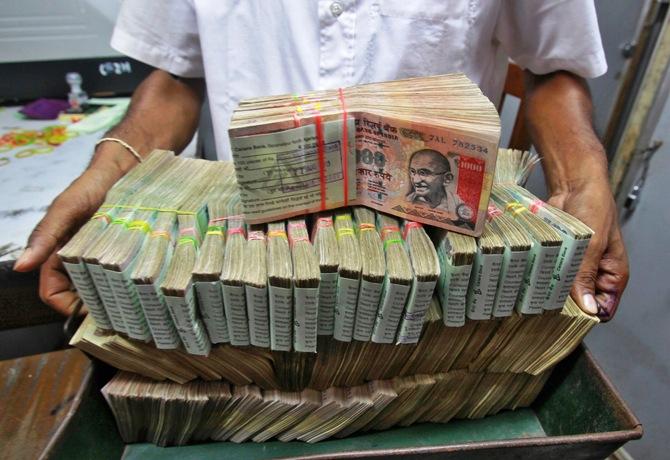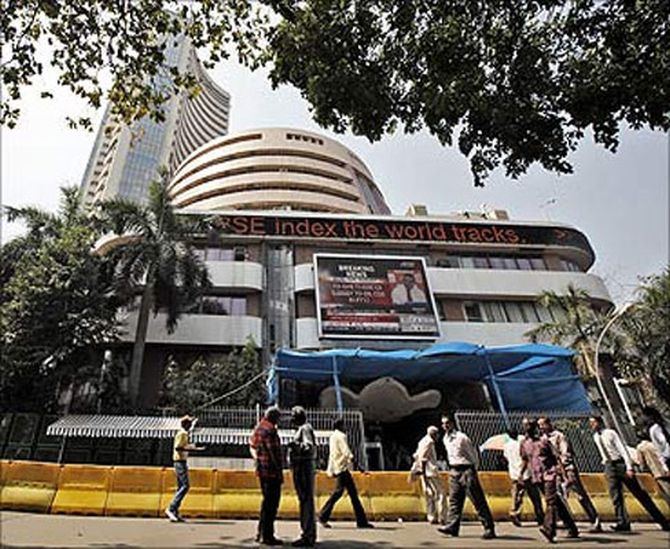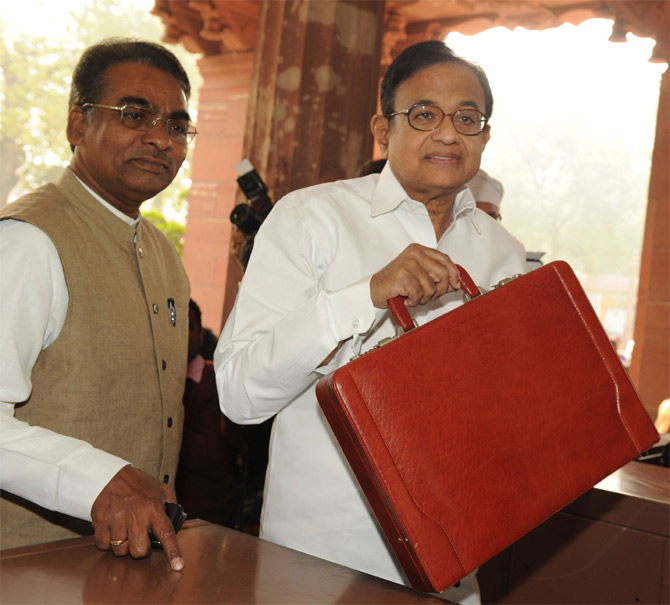Photographs: Reuters Business Standard
The Union government has fared extremely poorly in meeting the disinvestment target it set itself in the Budget for the current financial year.
With just a couple of weeks to go for the year to end, it has taken recourse to action that does no credit to either itself or the idea of disinvestment.
The target of Rs 40,000 crore (Rs 400 billion) to be garnered through disinvestment was revised in mid-February, that is barely six weeks before the end of the financial year, to less than half the original figure — to Rs 16,027 crore ( Rs 160.27 billion), when actual collection till then had been only Rs 5,094 crore (Rs 50.94 billion). In other words, an eighth of the target had been achieved in around seven-eighths of the time.
..
Govt halves divestment target, how will it bridge deficit gap?
Image: Current financial year has almost come to a close, and the government has expressed concern for missing out on its divestment target.Photographs: Reuters
This is nothing new; the United Progressive Alliance has missed its disinvestment target in all of the previous three years.
Even if this revised target is met, it will be far less than the Rs 24,000 crore (Rs 240 billion) raised in 2012-13 against a lower target of Rs 30,000 crore (Rs 300 billion).
Given this track record, it seems a disinvestment target is picked more with an eye on presenting a respectable fiscal deficit level in the Budget estimate without seeking to be realistic.
...
Govt halves divestment target, how will it bridge deficit gap?
Image: Subdued performance of capital market in the initial part of the financial year is one of the key reasons for government to revise divestment aim.Photographs: Danish Siddiqui/Reuters
There are two main reasons for the failure of the disinvestment programme.
One is the subdued state of the capital market for a good part of the current financial year, with a clear pickup happening only lately as financial circles anticipate a powerful performance by the Bharatiya Janata Party in the coming elections and initiation of business-friendly policies by a new government.
Even this recent upturn is largely on the strength of foreign investor interest, which is distinctly cool towards public sector shares. The second reason is inter-ministerial wrangling.
....
Govt halves divestment target, how will it bridge deficit gap?
Image: State-run upstream firm ONGC may buy out government's stake in Indian Oil Corp.Photographs: Amit Dave/Reuters
The petroleum ministry has been loath to sell shares in Indian Oil at the current subdued market prices, while the finance ministry’s main concern has been to meet its budgetary targets.
In the event, a compromise formula has been arrived at whereby two oil-producing firms under the same petroleum ministry, the Oil and Natural Gas Corporation (ONGC) and Oil India Ltd (OIL), buy the shares of Indian Oil in an off-market deal through which the shares remain within these state-controlled enterprises, but the government earns some revenue by selling its shares in one public sector undertaking to another.
.....
Govt halves divestment target, how will it bridge deficit gap?
Image: The government owns minority stake in Indian Oil Corporation.Photographs: Mukesh Gupta/Reuters
Thus, ONGC and OIL have bought a five per cent stake each in Indian Oil for Rs 5,340 crore (Rs 53.40 billion).
This makes a mockery of the disinvestment exercise; its sole aim is now to bridge the fiscal deficit.
What has gone out of the window are the other objectives of the disinvestment exercise such as imparting greater autonomy to the management of public sector companies by bringing in non-government shareholding.
That would have put pressure on the managements to become more efficient by being more responsive to market principles.
...
Govt halves divestment target, how will it bridge deficit gap?
Image: Finance Minister P Chidambaram has estimated fiscal deficit to hover around 4.6 percent for 2013-14.Photographs: Courtesy, Press Information Bureau
This business-as-usual scenario is made worse by the continued lack of reform in petroleum product pricing.
If disinvestment is to remain a sham, then at least the government should move onto real reforms on ownership and pricing in the crucial oil and gas sector.
Without this, the ultimate goal of gradually improving the economy’s energy efficiency will remain as distant as ever.








article